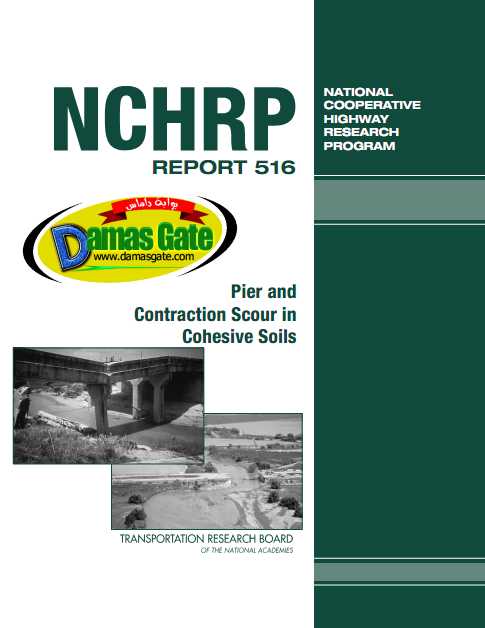Pier and Contraction Scour in Cohensive Soils
SCOUR TYPES
Bridge scour is the loss of soil by erosion due to water flowing around bridge supports.
Bridge scour includes general scour and local scour. General scour is the aggradation or
degradation of the riverbed not related to the presence of local obstacles. Aggradation is
the gradual and general accumulation of sediments on the river bottom. Degradation is
the gradual and general removal of sediments from the riverbed. Local scour is the scour
around obstacles to the water flow. Local scour includes pier scour, abutment scour, and
contraction scour. Pier scour is the removal of the soil around the foundation of a pier;
abutment scour is the removal of soil around an abutment at the junction between a bridge
and embankment; and contraction scour is the removal of soil from the bottom of the river
due to a narrowing of the river channel created by the approach embankments for a bridge.

SOILS: A DEFINITION
Soils can be defined as loosely bound to unbound, naturally occurring materials that
cover the top few hundred meters of the Earth. By opposition, rock is a strongly bound,
naturally occurring material found within similar depths or deeper. Intermediate geomaterials
occur at the boundary between soils and rocks. For soils, the classification
tests consist of grain size analysis and Atterberg Limits. The D grain size is the grain
size corresponding to 50% of the soil weight passing a sieve with an opening equal to D 50 50
. The first major division in soils classification is between large-grained soils and
fine-grained soils. Large-grained soils have D larger than 0.075 mm; fine-grained soils
have D 50 50 smaller than 0.075 mm. Large-grained soils include gravels and sands that are
identified on the basis of their grain size. Fine-grained soils include silts and clays that
are identified on the basis of Atterberg Limits. Gravels and sands are typically referred
to as cohesionless soils; silts and clays are typically referred to as cohesive soils.
Download
http://s18.alxa.net/s18/srvs2/02/002...sive.Soils.rar